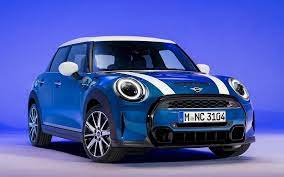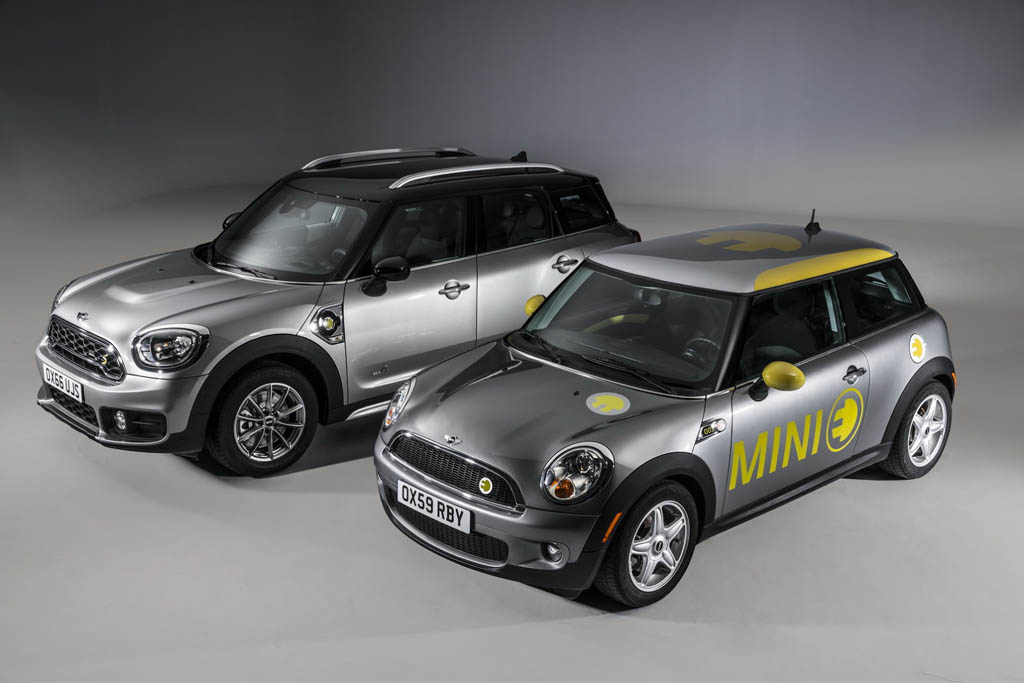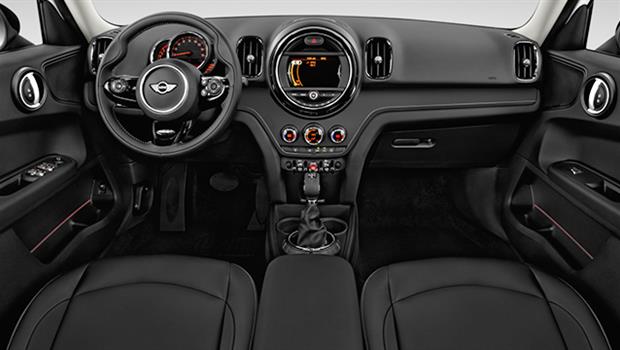The Mini brand is iconic in the automotive world, recognized for its compact, stylish, and agile cars. The history of the Mini traces back to the late 1950s when the original Mini was created by the British Motor Corporation (BMC). Designed by Sir Alec Issigonis, the classic Mini made its debut in 1959 and quickly became a cultural icon due to its innovative design, space-saving layout, and fun driving experience.
Over the years, the Mini has undergone various changes in ownership and evolved in its design and features. In 1994, BMW acquired the rights to the Mini brand and introduced a modern take on the classic car while preserving its distinctive look and driving characteristics. The new MINI, styled in a retro-modern fashion, captured the essence of the original while incorporating modern technologies and safety features.
The Mini lineup expanded to include various models, such as the classic Mini Cooper, the Cooper S, the Countryman (Mini’s SUV), the Convertible, the Clubman, and the Paceman. These models cater to different preferences, from compact city driving to more spacious and versatile options.
Mini cars are known for their nimble handling, go-kart-like driving dynamics, and customizable features. They often appeal to urban dwellers seeking a blend of style, efficiency, and personality in their vehicles.
In recent years, Mini has also embraced electric mobility with models like the Mini Electric, reflecting the brand’s commitment to sustainability and innovation in the automotive industry.
The Mini brand has a strong following among enthusiasts and continues to evolve, offering a balance of heritage, contemporary design, and driving pleasure in its lineup of compact cars.

A brief look at the evolution of the Mini car industry:
The history of Mini automobile manufacturing is a fascinating journey that began in the late 1950s. The original Mini was conceived by Sir Alec Issigonis and launched by the British Motor Corporation (BMC) in 1959. Here’s a breakdown of its history:
1959 – 1969: The Classic Mini Era
- Introduction of the Classic Mini: The first Mini, known as the Morris Mini-Minor and the Austin Seven, was unveiled in 1959. It was a revolutionary small car that maximized interior space within a tiny footprint.
- Innovative Design: Designed by Sir Alec Issigonis, the Mini featured a transverse engine, front-wheel drive, and a unique space-saving layout that allowed for exceptional interior room despite its compact size.
- Pop Culture Icon: The Mini quickly became a symbol of the swinging ’60s in Britain. Its popularity soared due to its practicality, affordability, and stylish design. It gained recognition in movies and was associated with celebrities and trendsetters.
1970s – 1990s: Evolution and Changes in Ownership
- Variants and Changes: The Mini underwent various updates and changes over the years, with different models and variations introduced. It remained popular for its charm and practicality.
- Ownership Changes: Through corporate mergers and changes, the ownership of the Mini brand shifted from BMC to British Leyland and later to Rover Group.

2000s: Revival by BMW
- Acquisition by BMW: In 1994, BMW acquired the rights to the Mini brand when it purchased the Rover Group. This led to a modern revival of the Mini.
- Introduction of New Models: BMW introduced the new MINI in 2001, blending the classic design with modern engineering and technology. This marked the beginning of a new era for Mini cars, maintaining the brand’s iconic style while incorporating contemporary features.
2010s – Present: Modernization and Diversification
- Expansion of the Mini Lineup: Mini expanded its lineup to include various models like the Convertible, Clubman, Countryman (Mini’s SUV), Paceman, and John Cooper Works performance variants.
- Electric Mini: Reflecting the industry’s shift towards sustainability, Mini introduced the Mini Electric, an all-electric version, offering an emission-free driving experience.

Some of the models produced by Mini Automobile Company:
Here are some of the notable models:
- Classic Mini: The original Mini debuted in 1959 and became an iconic small car known for its innovative design, compact size, and agile handling. Variants included the Morris Mini-Minor, Austin Seven, and more.
- Mini Cooper: A variant of the classic Mini, the Mini Cooper was designed for a sportier driving experience. It gained fame due to its performance enhancements and became a symbol of style and agility.
- Mini Countryman: As Mini’s foray into the SUV segment, the Countryman offers more space and versatility while retaining the brand’s distinctive design and driving characteristics.
- Mini Clubman: Known for its unique split rear doors, the Clubman is slightly larger than the standard Mini, providing more cargo space and comfort.
- Mini Convertible: This model offers the joy of open-air driving with a retractable soft top, combining the fun of a Mini with the freedom of a convertible.
- Mini Paceman: The Paceman was a three-door crossover SUV with coupe-like styling, offering a sportier appearance and driving dynamics.
- Mini Electric: Reflecting the shift towards electric mobility, the Mini Electric is an all-electric version of the Mini, delivering emission-free driving with the iconic Mini design.
- John Cooper Works (JCW) Models: These are performance-oriented versions across the Mini lineup, offering higher horsepower, sport-tuned suspensions, and enhanced driving dynamics for enthusiasts.

Challenges facing Mini Automotive Company:
Mini faces several challenges in the automotive industry, despite its iconic status and unique appeal:
Competitive Market: The automotive market is highly competitive, especially in the compact and premium segments where Mini operates. Competing with other established brands requires continuous innovation and differentiation.
Evolving Consumer Preferences: Shifting consumer preferences toward larger vehicles like SUVs and crossovers pose a challenge for Mini’s traditionally compact lineup. Adapting to changing preferences while maintaining the brand’s identity is crucial.
Regulatory Pressures: Stringent emission regulations and evolving environmental standards require investment in alternative powertrains, such as electric or hybrid models. Compliance with these regulations while maintaining performance and style can be demanding.
Technological Advancements: Keeping up with rapid technological advancements in areas like autonomous driving, connectivity, and safety features requires substantial investment and development resources.
Electric Transition: While Mini has introduced electric models, transitioning the entire lineup to electric vehicles (EVs) while ensuring range, charging infrastructure, and customer acceptance remains a challenge.
Supply Chain Disruptions: Disruptions in the global supply chain, such as shortages of critical components or materials, can impact production schedules and overall operations.
Global Economic Factors: Economic uncertainties, currency fluctuations, and geopolitical tensions can affect consumer spending patterns and impact sales in different regions.

Technical specifications of Mini Countryman E version:
Motor type: electric motor
Battery capacity: 64 kWh
Power: 201 horsepower
Torque: 250 Nm
Gearbox: automatic
Drive axle: front differential
Acceleration: 8.6 seconds
Speed: 170 km/h
Steering wheel: electric

Conclusion:
Mini car company has carved a unique niche in the automotive world, blending iconic design, compact functionality, and a distinct driving experience. With its origins dating back to the revolutionary classic Mini in the 1950s, the brand has continually evolved, navigating changes in ownership and market trends.
Its ability to balance heritage with modernity has been a key strength, attracting a loyal following of enthusiasts while also appealing to urban drivers seeking style, efficiency, and personality in their vehicles. Mini’s lineup, from the classic Cooper to the electric models, showcases a commitment to innovation and sustainability.
However, the company faces challenges typical of the automotive industry, including shifting consumer preferences, regulatory demands, and technological advancements. To thrive in a competitive market, Mini must continue embracing innovation, focusing on electrification, and adapting to changing market dynamics while preserving the distinctive characteristics that have made it an enduring symbol of automotive ingenuity.
For more information, visit the official website of Mini Automobile Company
Read this article : BMW car company

Leave a Reply